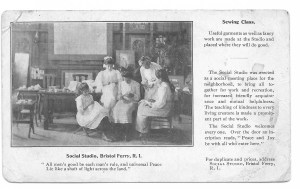The Glen Manor House is a Portsmouth jewel. We will share some of what we know about the history of the building and what it was like when the Taylors lived here. Even though the Taylor family began Glen Farm in 1882, construction did not begin on their home until around 1920. The Taylors had a Newport summer home, but they preferred the countryside of Portsmouth to the high society of Newport. They hired famed architect John Russell Pope to design their new home. Moses Taylor and his wife Edith had lost a son in World War I in France. There are stories that the French chateau style and the broad grass steps of the house were designed to remember the place where their son died. The house was completed in 1923.
Architect Pope encouraged the Taylors to hire the famed Olmstead firm to do the landscaping. Mrs. Taylor was involved in the details of the landscaping. The gardens were designed to be at their best in July and August when the Taylors would be in residence. The Taylors relished their privacy and the home is situated away from the road to give them that privacy. Moses Taylor died in 1928, but Edith Taylor continued to spend more time at the Glen. She opened the gardens to the public to benefit the Civic League and hosted dog and horse shows on the farm. She remarried and became Mrs. G. J. Guthrie Nicholson, but continued to come to the Manor House until her death in 1959.
In 1960 the Manor House and 43 acres around it were sold to the Elmhurst Academy of the Sacred Heart. The house served as a dormitory for boarding students. When Elmhurst Academy closed in 1972, the Town of Portsmouth bought the house and the property. Portsmouth citizens still own the house and the Glen Manor Authority and the Friends of the Glen Manor House constantly strive to restore the house and gardens.
Some added information:
- We call it the Glen Manor House, but the Glen Farm families called it “The Big House,” and the Taylor family called it simply, “The Glen.”
- Taylors had a permanent Garden staff that took care of the gardens while the Farm staff took care of the farm.
Some of the trees were grown in the glen nursery or brought from Long Island, “Vanicek delivered thirty four trees and shrubs.” - There was a house staff of over ten individuals, a garden staff and a person whose full time job was bringing in and arranging fresh flowers in the Flower Room.
- Taylor used to enjoy sitting in the verandah watching the river. She enjoyed sailing and there was a dock and boat house at the Manor House . Her 24 foot sailboat (named the “Nieuport”) was anchored off the dock.
- The boathouse by the dock had showers and changing rooms so they could freshen up after sailing or enjoying the beach (Sandy Point).
- The stone boathouse that was cut into the hill was where they stored small boats and there was a skeet range on top of this structure. The skeet range was built by Guthrie Nicholson, Mrs. Taylor’s second husband.

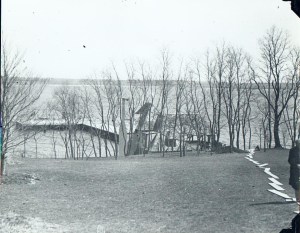
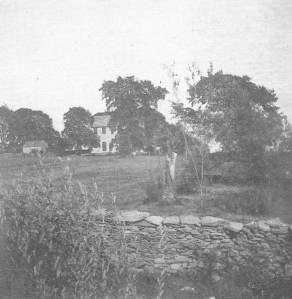

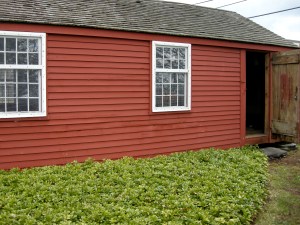
 So often we focus on the famous people associated with Portsmouth – Anne Hutchinson, Julia Ward Howe, the Vanderbilts. This blog will call attention to one of those pillars of Portsmouth life who gets little recognition. As I research Portsmouth history, George Manchester’s name keeps appearing. He is like a thread that runs through the fabric of town society.
So often we focus on the famous people associated with Portsmouth – Anne Hutchinson, Julia Ward Howe, the Vanderbilts. This blog will call attention to one of those pillars of Portsmouth life who gets little recognition. As I research Portsmouth history, George Manchester’s name keeps appearing. He is like a thread that runs through the fabric of town society.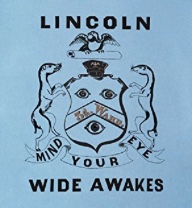
 When Emeline Eldridge died at eighty years of age in 1934, her obituary mentioned many ways she made a difference in Portsmouth. She had been Superintendent of Schools in an era when that was a rare role for a woman. Emeline (also known as Mrs. John Eldredge) was a long time board member of the Portsmouth Library Association. She was an active member of St. Paul’s Church and the Ladies Association. For many years she was in charge of the Social Studio at Bristol Ferry “where (said the obituary) young people used to gather for dancing lessons, instruction in wood carving and other work.”
When Emeline Eldridge died at eighty years of age in 1934, her obituary mentioned many ways she made a difference in Portsmouth. She had been Superintendent of Schools in an era when that was a rare role for a woman. Emeline (also known as Mrs. John Eldredge) was a long time board member of the Portsmouth Library Association. She was an active member of St. Paul’s Church and the Ladies Association. For many years she was in charge of the Social Studio at Bristol Ferry “where (said the obituary) young people used to gather for dancing lessons, instruction in wood carving and other work.”